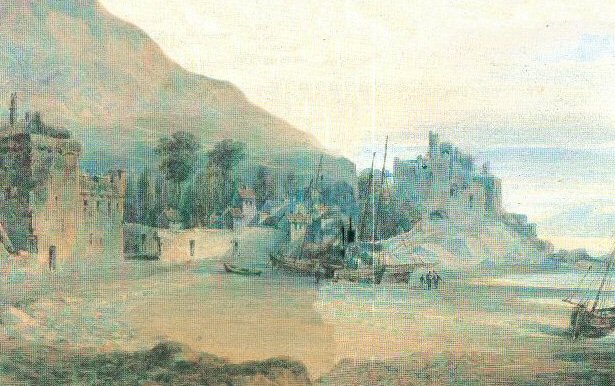When they thought it safe to journey through Ireland (i.e. when the ‘natives’ were sufficiently subjugated) various English gentlemen-of-leisure ventured to the smaller island, to give account, in books, diaries and journals, of the new countryside they had explored and the valiant efforts of their fellow-countrymen to bring civilisation to the savages.
The following account of the beautiful Carlingford is from Dr Pococke’s Tour in Ireland in 1752.
‘We turned to the North and ascended to Carlingford, a poor town of one long street of cabins, at the foot of the high craggy mountains, from which several little streams descend and pass through the town.
At the west of the town in an old Castle, said to be built by King John – and remains of several old towers to the sea, which were built to the roads, that are now destroyed and seem to have been ancient habitations.
This is properly the port of Newry from which the vessels go up four miles higher to narrow walls to unload into Gabbots: they say 400 vessels commonly come into this harbour every year: this and the oyster fishery for Dublin is the chief support of the town: and a great number of boats are constantly carrying limestone from the quarries on each side of the mouth of the harbour to Newry to be burnt for their buildings.
There was a tolerable inn here, but the bed chamber being within the kitchen, as soon as I rose, the pigs made my levee.’
